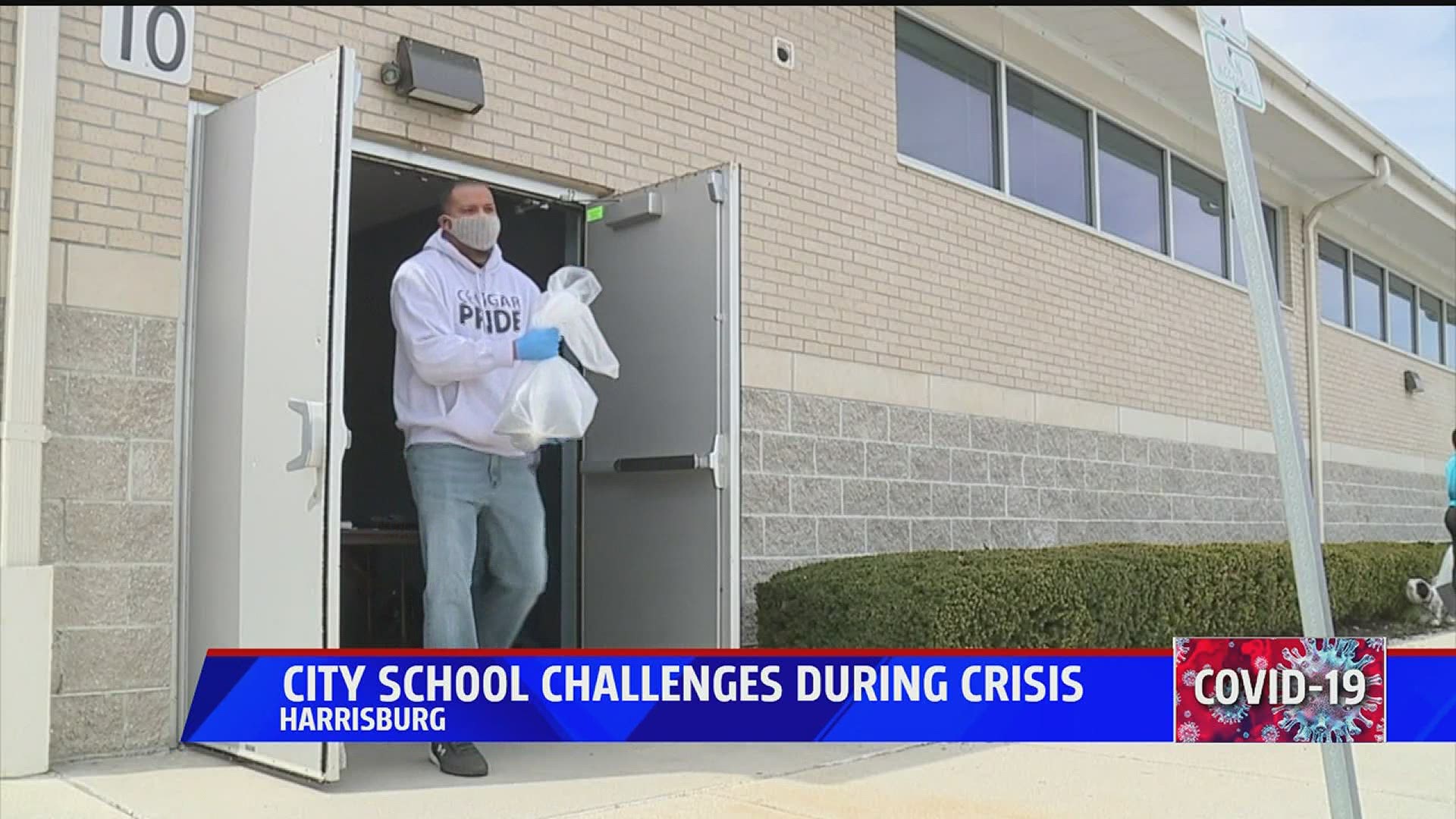HARRISBURG, Pa. — When Governor Tom Wolf announced all schools across Pennsylvania closed back on March 13, Harrisburg School District's Chief Academic Officer Dr. Susan Sneath wasn't immediately sure what the next steps were.
"Oh my God," Sneath remembered thinking. "How are we going to do this? How will we do this?"
Facing an unprecedented situation, Sneath and her team of administrators at Harrisburg weren't sure how to continue education forward for the 6,575 students K-12 in the district. They decided on a phone survey to find out how families in the district best consume information.
Every teacher was asked to contact each child's family in their class. They asked about internet access, devices, televisions, and cell phones.
"We even asked if they had game systems because we thought we might be able to reach kids through an XBOX or Playstation," Dr. Snead said.
Harrisburg educators made 5,498 calls, according to data given to FOX43 by the Harrisburg School District. Teachers only connected with 3,684 families. That's 1,814 the district could not reach.
"That’s pretty concerning," Sneath admitted. "Also understandable, because in these tough times if a family runs out of minutes or data their cell phones don’t work.
"Do we feel we have been able to be in contact with everyone? No, we haven’t."
The dilemma Harrisburg is facing in reaching families and educating children during the COVID-19 stay-at-home order is not dissimilar to what many large, urban school districts are facing.
At Lebanon School District, Superintendent Dr. Arthur Abrom admits some students couldn't be reached for their classes because they had to take jobs to help make money for their family. Abrom adds Lebanon's biggest problem is inequality.
Currently, Abrom says there are enough devices -- laptops and iPads -- in the school district to give to all students 8th through 12th grade. He estimates that around 2,000 total devices. Lebanon also applied for a state equity grant for additional funding. However, even if Lebanon is awarded the grant money, Dr. Abrom says schools are capped at a maximum $50 allowed per student. Students in 6th and 7th grade would be able to get Google Chromebooks -- because they're less expensive than iPads, Abrom says -- but no devices would be given to students in Kindergarten through 5th grade.
"We would need $1 million dollars if not more," Abrom said. "The grant simply is not enough to supply technological devices to all students in need across Pennsylvania. What it shows is further inequities for the state in terms of funding."
Because K-5 students would essentially be reviewing material for the next two months instead of moving lesson plans forward, Abrom admits those students would start next year behind, having to finish their previous year's lesson, before moving ahead around 45 days later.
Major issues aside, it's not as if school districts aren't trying. Harrisburg School District made devices available for John Harris High School students through a device distribution pick-up the last couple weeks. Since those devices were handed out, the high school has about a 70% participation rate among students, while Harrisburg Sci-Tech is at 95% participation.
Harrisburg also, in conjunction with city government, is broadcasting all their lesson plans on the city's public access channel, WHBG-20. School administrators learned during their phone survey that 95% of families had access to a television.
"This was a perfect convergence," said Harrisburg Mayor Eric Papenfuse. "I think it's exactly why we have a public broadcast channel in the city, to be able to reach our residents, and connect students with teachers. It's a wonderful opportunity."
Harrisburg is also streaming their lessons on their website, and have content available on WITF-TV and GreatMinds.org.
FOX43 reached out to the School District of Lancaster and York City School District for this story. Lancaster said they did not have enough reportable data. York did not return phone calls.

